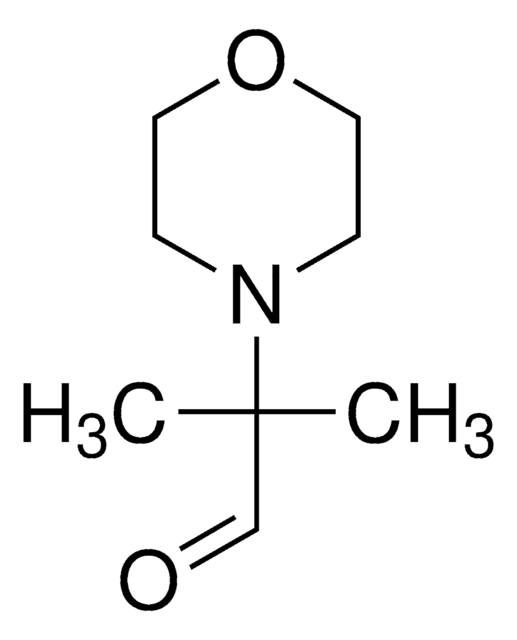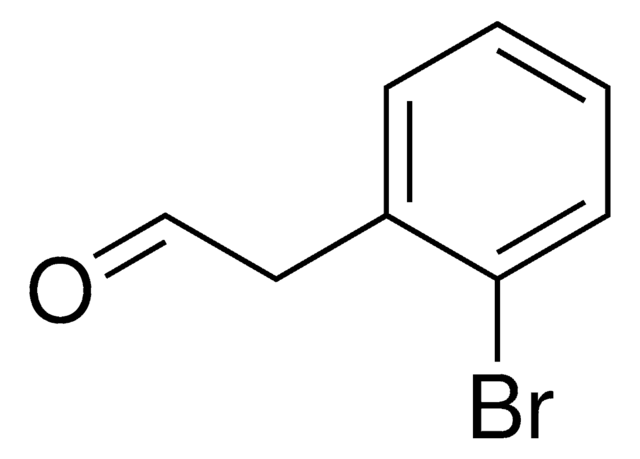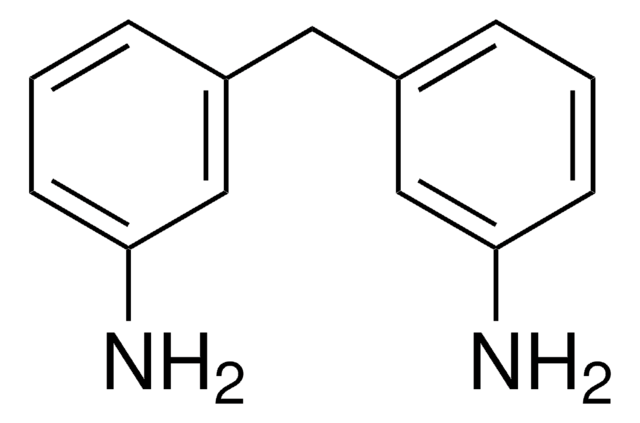All Photos(1)
About This Item
Linear Formula:
CH3CO2(CH2)4CH=CH2
CAS Number:
Molecular Weight:
142.20
MDL number:
UNSPSC Code:
12352100
PubChem Substance ID:
NACRES:
NA.22
Recommended Products
Assay
97%
refractive index
n20/D 1.423 (lit.)
bp
173-174 °C (lit.)
density
0.883 g/mL at 25 °C (lit.)
SMILES string
CC(=O)OCCCCC=C
InChI
1S/C8H14O2/c1-3-4-5-6-7-10-8(2)9/h3H,1,4-7H2,2H3
InChI key
MPLWNENKBSBMFN-UHFFFAOYSA-N
General description
5-Hexenyl acetate is a linear ester. It can undergo ruthenium-catalyzed cross-metathesis reactions with α-substituted vinyl boronates in dichloromethane. It participates in the post-polymerization modification step during the preparation of poly(vinylnorbornene).
Application
5-Hexenyl acetate may be used in the synthesis of (4E,7Z)-4,7-tridecadienyl acetate.
Storage Class Code
3 - Flammable liquids
WGK
WGK 3
Flash Point(F)
141.1 °F - closed cup
Flash Point(C)
60.6 °C - closed cup
Personal Protective Equipment
dust mask type N95 (US), Eyeshields, Gloves
Choose from one of the most recent versions:
Already Own This Product?
Find documentation for the products that you have recently purchased in the Document Library.
Xicotencatl Camacho-Coronel et al.
Frontiers in plant science, 11, 121-121 (2020-03-12)
Numerous plant-derived volatile organic compounds (VOCs) induce the expression of resistance-related genes and thereby cause an "associational resistance" in neighbouring plants. However, VOCs can also be sequestered by plant cuticular waxes. In case that they maintain their biological activity, such
Nonconjugated dienes from 1-alkenes: Application to the synthesis of sex pheromone (4E, 7Z)-4, 7-Tridecadienyl acetate
Kim TH and Park KM
Tetrahedron Letters, 36.27, 4833-4836 (1995)
Synthesis of tri-substituted vinyl boronates via ruthenium-catalyzed olefin cross-metathesis
Morrill C, et al.
Tetrahedron Letters, 45.41 , 7733-7736 (2004)
Ring-opening metathesis polymerization of vinylnorbornene and following polymer modifications
Balcar H, et al.
Journal of Polymer Research, 21.9, 1-8 null
Zhiqiang Yao et al.
Protein science : a publication of the Protein Society, 27(8), 1526-1534 (2018-05-04)
The study of enzyme substrate specificity is vital for developing potential applications of enzymes. However, the routine experimental procedures require lot of resources in the discovery of novel substrates. This article reports an in silico structure-based algorithm called Crius, which
Our team of scientists has experience in all areas of research including Life Science, Material Science, Chemical Synthesis, Chromatography, Analytical and many others.
Contact Technical Service![(3R)-3-{[(9H-Fluoren-9-ylmethoxy)carbonyl]amino}-3-(3-methylphenyl)propanoic acid AldrichCPR](/deepweb/assets/sigmaaldrich/product/structures/369/030/c37536c8-fce7-456d-a3f2-1b29a57c2c52/640/c37536c8-fce7-456d-a3f2-1b29a57c2c52.png)








